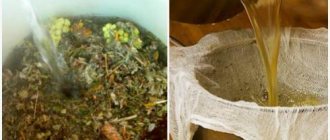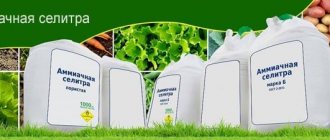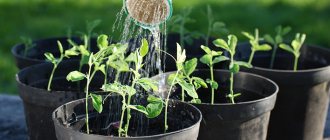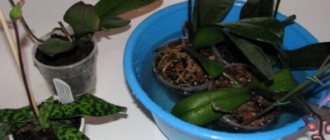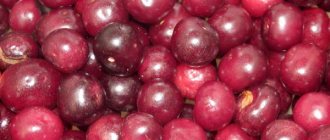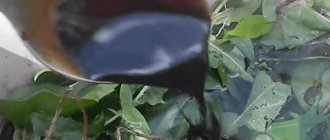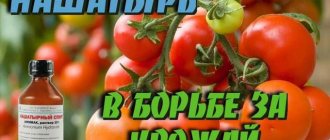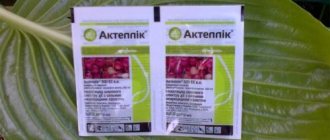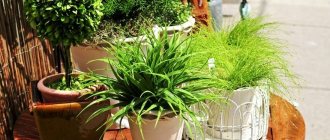Green soap is a plant pest control product. It is usually green or light brown in color and is applied in a thin layer to the leaves and stems of plants. Despite the appropriate color and smell, this liquid is not soap in the truest sense of the word. The basis of the product is potassium salts of fatty acids, so it is widely known as green potassium soap. It also contains animal fats, vegetable oils and water.
How to make a soap solution for a tattoo?
How to prepare a working solution?
- Dilute 1 part of green soap, for example, 10 ml, in 10 parts of distilled water, 1 liter.
- Mix well, transfer to a closed container - a battle spray or a spray bottle (a bottle with a fine spray).
Interesting materials:
How to speed up the drying process of oil painting? How to speed up the flowering of chrysanthemums? How to speed up the flowering of the Multiflora chrysanthemum? How to speed up the flowering of late chrysanthemums? How is flexible stone installed? How to install a plinth for a countertop? How to install flexible stone? How to install kitchen legs? How to resolve error e4 in the dishwasher? How to fix a leak in a sewer pipe?
Composition and principle of action of the drug
Green soap for indoor plants and garden crops is considered a very effective means of pest control . It contains only natural ingredients, so its environmental friendliness makes this drug safe for people. This important quality contributes to its widespread distribution . To enhance the effect of green soap, in some cases the composition can be supplemented with ash or tobacco infusion.
After plants have been treated with green potassium soap, an invisible thin film is formed on them, which has a double protective effect. It protects leaves and stems from parasites and prevents those pests that have already reached the surface of plants from breathing, and also prevents their larvae from developing. The most successful use of the drug is against:
- spider mites;
- bedbugs;
- scale insects;
- aphids;
- pennies;
- fungal infections.
At the same time, it is known that this product is not very effective against whiteflies and some other pests that can smolder plants.
Instructions for using green soap
Treatment of plants in open and protected ground
Natural sediment in green soap is considered normal. Before use, the container with the drug must be shaken.
Spray the plants with a 2.5-4% solution of the drug. When used together with pesticides, the soap concentration should be 0.4-1%. Treatment is carried out no more than 3 times per season and no later than 5 days before harvest. Against eggs and larvae of pests, the drug solution is sprayed in early spring, before the buds swell. You can treat the plant with green soap just before winter arrives.
Treatment of garden plants
Preparation of the emulsion: 40-50 g of green soap are dissolved in 1 liter of boiling water. After the mixture has cooled to 50 ºC, 2 liters of kerosene are poured into it with constant stirring. This sour cream-like mixture does not separate and remains suitable for treating plants for several days. To spray trees, this mixture must be diluted with warm water, increasing the volume by 2 times. If the leaves on the trees are still green, then the solution is diluted with water 12-14 times. Treatment is carried out in the evening or in cloudy weather. Spraying with a 0.4-1 percent solution of green soap is used to prevent damage to garden trees and cultivated plants by scab, rust, powdery mildew, late blight and other fungal diseases.
Fighting diseases on indoor plants
The appearance of powdery mildew, spotting and rust on indoor plants can be prevented by treating them with a solution prepared according to this recipe: in one container, 2 g of copper sulfate is dissolved in 1 liter of water, and in another container, 20 g of green soap is dissolved in the same amount of water. Then the solutions need to be mixed and immediately treated with plants.
- Reviews about the use of insecticide Karate Zeon
Folk remedies + green soap
Green soap is also added to herbal insecticidal decoctions and infusions:
- A tobacco-soap solution is used against sucking pests. 10 liters of sixty-degree water are poured into 1 kg of tobacco waste, infused for 24 hours and filtered. 2 liters of this solution are mixed with 10 liters of water, and then 20-25 g of green soap are added to the composition;
- stir 3 tablespoons of wood ash into 10 liters of warm water, leave for 24 hours, then add 40 g of green soap and use immediately;
- against spider mites, aphids and scale insects, use the following mixture: 20 g of mustard powder and 200 g of green soap are dissolved in 9 liters of water. Then, with constant stirring, pour in 2 g of copper sulfate for each liter of solution. This mixture also helps get rid of powdery mildew on currants, gooseberries and strawberries.
Reviews
Irina: I have been using green soap for several years, and I always have it in stock. I treat trees and shrubs, as well as indoor plants, with a solution of this drug before the buds swell. I don’t use chemicals because I have small children. The product is reliable, cheap, harmless and environmentally friendly.
Pyotr Nikolaevich: sprayed a solution of green soap on the cucumbers that were inhabited by aphids. I don’t use chemicals, but before that I treated the beds with garlic infusion, dusted them with wood ash, and the aphids didn’t seem to decrease in number. After spraying the leaves with green soap, the number of pests gradually decreased. After a few days the pests were gone.
Anna Semyonovna: my indoor plants suffered from mealybugs, which I brought home along with the orchid. I was in such a hurry to get her into the best place that I forgot about quarantine. As a result, the pests colonized three neighboring flowers. Treatment with Fitoverm did not give any special results, Fufanon also did not help much. I realized that I couldn’t get rid of scale insects quickly, so I began treating all the flowers with green soap every week. The scale insects have disappeared.
- Potassium permanganate: how to use, what helps
Official website and manufacturer's recommendations: https://www.technoexport.ru/household/catalog/herb-protection/insect-pests/zelenoe-mylo-sprey-prosto
Terms of use
Before breeding, you must carefully study the instructions . Even the safest drug should not be used undiluted. Be sure to shake the bottle before preparing. To get the maximum effect, it is important to understand for what purpose and in what dosage it should be used.
Use for diseases
For the prevention and treatment of plant diseases, mixtures based on copper sulfate are needed.
The fact is that the substance destroys the spores of the disease, suppressing the active reproduction of diseases. In combination with soap, it enhances the antifungal effect. For prevention, 50 ml of the substance is diluted in five liters of liquid and sprayed on the plantings. Professionals advise taking warm water, in which the product dissolves better. In many crops, the leaf surface is covered with an invisible waxy coating, which prevents the fungicide from penetrating into the tissues. The soap base destroys the protective film and improves the “destructiveness” of the etching agent. When using copper sulfate, you need to take 25 grams of poison and 200 grams of green remedy. The components are separately dissolved in water, and then combined in two liters of liquid. Treat tops and branches every 10 days in dry, windless weather.
Wood ash is an auxiliary supporting agent in the fight against fungi. It is necessary to pour a bucket of moisture into the substance, bring to a boil and leave for three hours. 30 g of the drug is added to the cooled solution, after which the vegetables are sprayed over the leaves.
Insect repellent instructions
To prevent the invasion of aphids, spider mites and scale insects, the chemical is dissolved in a warm liquid. The recommended dosage is a quarter liter per bucket of water. The resulting suspension is poured into a spray bottle and sprayed on branches, trunks and tops of vegetables, grapes and fruits three times a month. The more carefully the composition is applied, the less chance parasites have to remain in the garden or plantation.
If pests have already appeared, then you can use green soap for plants according to the instructions. Dilute 200 grams of the active substance in 10 liters of moisture and add an alkaline-based insecticide. All components are thoroughly mixed, after which the affected specimens and their “neighbors” are treated.
Garlic is used in gardening and farming against ticks. A quarter kilogram of soap and 50 g of fresh crushed spice are added to a bucket of liquid. The mixture is sprayed on the foliage and trunks, repeating the procedure once a week. The same result is shown by the preparation with tobacco dust. A kilogram of waste is brewed with boiling water, infused, and then poured into a foam solution. To enhance the effect, add wood ash .
In an apartment or miniature greenhouse, green soap is used for indoor plants. The product is combined with ready-made solutions based on pesticides, herbal decoctions or growth activators (Epin, Zircon).
Since the substance alkalizes the soil, it cannot be combined with fertilizers and cannot be watered at the root. The leaf plate is sprayed with a spray bottle or a foaming solution is applied manually.
To enhance the effectiveness of the procedure, all actions are carried out in the first half of the day or in the evening, after sunset. The chemical does not wash off from crops for a long time, so you don’t have to worry about rainfall and watering. Before sprinkling and irrigating, experts recommend waiting a couple of hours and then starting to moisturize. For potted plants, protect the soil with polyethylene .
Tar soap for aphids: recipes for various solutions
Despite the fact that our article is devoted to tar soap as the main method of control, we will also talk about other options. To kill aphids, tar soap is a very effective remedy, but you can also use laundry soap, liquid soap, and others.
Tar soap
A solution based on tar soap is prepared according to the same scheme, but the concentration should be reduced: use one hundred grams of soap per ten liters of water. Tar not only helps to cope with pests, but also has a healing effect, restoring tissue and healing damage. Tar soap has a rather pungent odor that lingers on the foliage for some time and repels harmful insects. By carrying out preventive treatments with such a solution, you are guaranteed to protect your summer cottage.
Soap and ash
If you have a sufficient supply of wood ash, then you don’t need to come up with anything else: it is a pest repellent, a cure for diseases, and a fertilizer. In the case of aphids, the effect of ash is based on the fact that it causes irritation on the skin of insects, and makes the juice of plant leaves bitter and unsuitable for aphids. The soap in this solution acts as a glue, helping the ash to stay on the plants longer.
This product is somewhat more difficult to prepare; you will need 300 grams of ash sifted through a sieve, ten liters of water and 20 g of tar soap (can be replaced with 40 g of laundry soap). Add the ash to the water and place on the stove; when the solution boils, reduce the heat and cook for another 30 minutes. After the solution has cooled, add soap and stir thoroughly. This remedy, like all others, must be prepared immediately before use.
Baking soda
For ten liters of water you will need half a piece of laundry soap (can be replaced with a quarter of a piece of tar soap). Dissolve the crushed soap in water, add 10 tablespoons of soda and mix the solution well. Experienced gardeners recommend this remedy as one of the most effective.
This solution is also very popular. It is multi-component, preparation takes time, but the result is worth the effort, since all components enhance the effect of each other. You will need 200 grams of dry tobacco leaves, 3 pods of hot pepper (fresh if possible, not dry), 100 grams of laundry or 50 grams of tar soap, 3 tablespoons of ash and ten liters of water.
Grind dry tobacco leaves, finely chop the pepper, mix with water and leave to steep for 24 hours. Then add soap, ash and mix well - the solution is ready, it will help get rid of not only aphids, but also many other pests.
Of all the options proposed above, this is the only composition that can be prepared in advance, and the soap can be added immediately before use.
You can use tops of tomatoes or potatoes, which must first be chopped. For ten liters of water, take 4 kg of plant material and 50 g of any soap.
Wood ash is known for its beneficial properties. It is often used by summer residents as soil fertilizer. It is also excellent at getting rid of insect pests. Preparing a special remedy for aphids is easy:
- you need to sift about 300 grams of wood ash through a sieve;
- dissolve it in a 10-liter bucket of water and put on fire;
- bring the solution to a boil, cook for 30 minutes;
- cool the mixture and dissolve 40 grams of grated laundry soap in it;
- Soap ash solution for aphids is ready for use.
Evaluating the effectiveness of using green soap against pests in gardening: reviews
Insecticidal soap is an excellent alternative to chemicals; it seems to be an affordable and natural product. It is easy to dilute this component in water, and processing plants does not take much time or effort and does not require special protection other than gloves.
Speaking about the use of green soap in gardening, summer residents highlight the following advantages:
- safety for plants and people;
- efficiency;
- low price.
Potassium soap is gaining positive reviews due to its functionality, because it can be used both as a main remedy and to improve other drugs.
Laundry soap for aphids
Aphids on the site can negate all efforts to grow vegetables, berries and fruits. It not only sucks juice from plants, but is also a carrier of many dangerous diseases.
You can buy many effective chemicals for aphids in gardening stores, but it is better to try to fight them with the help of improvised means.
In this case, the fruits and berries will be environmentally friendly, which is important for maintaining health. 1
1
Traditional methods of fighting aphids
Gardeners destroy aphids in a wide variety of ways:
- wash it off with water;
- spray infected plants with infusions of fragrant herbs;
- attract insects and birds that feed on aphids to the garden;
- sprinkle the areas where aphids accumulate with bulk materials (ash or ashes).
One of the most effective folk methods is the use of laundry soap. Read on to learn how to use it to kill aphids.
2
Soap solution from laundry soap
It's very easy to do:
- Grate 300 g of laundry soap on a coarse grater.
- Pour the shavings into a ten-liter bucket and pour in 2 liters of warm water.
- Wait until the soap dissolves. To speed up the process, stir it with water using any long object (stick, old spoon, metal pin).
- Pour 8 liters of water into a thick soap solution and stir until smooth.
Aphids can also be destroyed using liquid laundry soap, which is intended for washing very dirty clothes and vegetable bags. It needs to be dissolved in water in the same way, but for 10 liters of liquid take 125 ml of liquid soap.
Tar soap has also proven itself well in the fight against aphids. You will need even less of it - only 100 g per bucket of water. But the effect of such a solution on aphids will be the most effective.
Tar, which is present in soap, will help heal small wounds and cracks on plant stems.
3
Ash-soap solution
If you have wood ash, use it along with soap:
- Sift the ash through a fine sieve until you have three hundred grams of it.
- Place a bucket with 10 liters of water on the fire and pour ash into it.
- Bring to a boil and cook for 30 minutes.
- Cool the ash solution, and then dissolve 40 g of grated laundry soap in it.
Take 1 heaped tablespoon of baking soda and a quarter of a grated bar of soap. Place everything in a ladle and pour in 1 liter of hot water. Stir until smooth.
5
Soap and tobacco solution
Grind 200 g of dry tobacco leaves into dust, pour it into a bucket of water and add a couple of fresh hot peppers, cut into small pieces. After infusing for a day, add 2 tbsp to the bucket. l. grated soap and 2 tbsp. l. ash.
6
Soap and tomato tops solution
To control aphids, use leaves or tops from tomatoes. Take 4 kg of raw materials and chop finely. Place in a bucket and fill with 10 liters of cold water. Leave for 4-6 hours, and then set to simmer. After boiling for thirty minutes, put 50 g of laundry soap in a bucket and boil until it dissolves.
7
How to use soap-based solutions
All of the above solutions can only be used when cooled to room temperature. Typically, bushes and trees are treated using a garden sprayer.
To prevent it from malfunctioning due to solid particles of soap, ash, or plant stems getting into the tube, any solution must be filtered through cheesecloth before use. It is also possible to treat plants against aphids using an ordinary household broom.
It should first be dipped in a bucket, and the bushes should be shaken. For this method, it is not necessary to filter the prepared solution.
Start controlling aphids as soon as you first see them on your plants. Do not put off treatment for too long, because aphids multiply very quickly. There is evidence that during spring, summer and autumn, aphids provide life for fifty of their generations. Also destroy ants, which are carriers of aphids throughout the area.
Green soap for indoor plants (video)
This product will be a worthy weapon against pests and fungal plant diseases, and the natural ingredients in the drug make it possible to use it even at home. One single package of green soap will protect indoor flowers, berries and fruit crops.
It will definitely not be superfluous in the supply of medicinal preparations for a lover of all kinds of plants.
0 Anna 04/03/2017 18:13 I have been growing different varieties of grapes for a long time! And every year one of the varieties dies due to harmful insects that literally destroy the plant to the roots! I tried a lot of things, but only one product helped, “Green Soap.” It It’s safe for people, which is no less important, and there is a result despite its rather low price! It’s easy to get divorced!
Quote
-1 Oleg 07/30/2017 09:31 Legends about green soap date back to Soviet times, when with its help they got rid of everything from the Colorado potato beetle to pubic lice.
Yes, it creates a film, i.e. changes the habitat of harmful insects, the weakest of them may die from this, but stronger forms adapt to it over several generations and emerge from this confrontation practically invulnerable to many other means. Quote
What is it and what does it consist of?
In fact, soap can have a color from light green to yellowish. Why is that? The product contains potassium salts, plant extracts (for example, nettle or pine needles), water, glycerin and natural vegetable oils. And, if hemp or olive oil was used in its production, then it really turned out green. This is where the name comes from - green soap.
Over time, the recipe changed. Now they use sunflower, flaxseed and other unsaturated fatty acids, so the color may be different. But despite this, the name was retained so that the product would be recognizable to customers.
Classic 40% green soap in cosmetology, pharmacology and veterinary medicine has long and reliably held its position.
But, there are other forms of it. Potassium soap can have a concentration of 20, 40 and even 70 percent. Such varieties are used in other areas. Where exactly?
- It occupies an honorable place in pharmacology. It is often used as the basis for special disinfectants and cleansers for skin. Added to various ointments.
- A popular product in cosmetology. Used in the creation of protective creams and ointments. Also available as an essential additive for body care bath lines.
- Veterinary medicine widely uses potassium soap to treat hands and surgical sites on the body of animals.
- Agriculture has also adopted this remedy. It is added to preparations to combat various diseases and plant pests.
- Green soap is also used in the production of detergents. It is used as the basis for a wide variety of household and chemical products. What is its advantage over its synthetic counterpart? Eco-friendly and hypoallergenic. This means that it will not cause allergies and will completely decompose without harming the environment.
Not so widely, but it is also used in other areas of life: in mechanical engineering, in the chemical industry, in construction.
Compatibility with other tools
Green soap can be used as a stand-alone product or in combination with other drugs:
- Tinctures and decoctions of tobacco, garlic, ash and herbs. Such products are effective as preventive measures against the development of fungus and plant mold.
- With solutions of a chemical nature. The complex of soap and chemicals allows you not only to achieve a good result, but also to prolong it. The chemical components deposited on the plants are firmly sealed with a film created by green soap. As a result, they are not blown away by the wind or shaken off and have an effect on plant diseases.
- As a stand-alone product, plant soap is effective in the initial stages of the development of infections and parasites.
What does the remedy combat?
Green soap against pests can cope with many plant diseases:
- Powdery mildew. Green soap will enhance its properties several times if you add it to a sulfur solution. With such a plant disease, spraying should be carried out in hot and sunny weather so that evaporation occurs faster. After the session, the procedure is repeated after 2 weeks.
- Gray rot on plants. To get rid of the disease, it is recommended to mix the product with a solution of copper sulfate. For better results, repeat the procedure after a couple of weeks.
- Leaf aphids. In this case, pure green soap is used, without any additives. Spraying is carried out with a direct stream on the accumulation of insects.
- Fungal diseases tend to spread to neighboring plants. Therefore, spraying should be carried out annually to prevent the spread of the fungus. To do this, use a solution of three components: green soap, karbofos and copper sulfate.
Important Precautions
Despite the fact that the drug is not toxic and does not have an allergic effect on humans, when working with a product such as green soap, the instructions for use must be carefully followed. The most important precautions:
- use the solution strictly according to the instructions on the package;
- do not exceed the recommended dosage;
- provide protection for the skin of hands and eyes, work in glasses and gloves;
- use the solution only for treating leaves and stems of plants;
- do not allow the solution to get on the root system;
- Do not store the remaining solution, wash it off after spraying.
The drug should not be accessible to children and pets; it should be stored away from food and medications in a dark place. The maximum storage period should not exceed two years.
If the drug does get on the skin, eyes or esophagus, then you must take first aid measures:
- in case of contact with the skin, rinse it with running water, apply a bandage with a weak solution of acetic acid for a few minutes, and then rinse this area of skin again;
- in case of contact with eyes, rinse them with running water for 15 minutes, treat eyes with Albucid and show eyes to an ophthalmologist;
- if it gets into the esophagus, drink several glasses of drinking water, take two tablets of activated charcoal and visit a doctor.
What are the features of green soap?
The drug is a thick liquid with a specific odor and green-brown color. The consistency of the product varies depending on the manufacturer. The insecticide is usually called soap because of the viscous layer that remains when interacting with the surface of various objects.
Composition and ingredients
A distinctive feature of the insecticide is its composition: these are natural ingredients that ensure safe and environmentally friendly use in close proximity to humans, pets and the environment. Green soap contains:
- animal fats (cattle);
- vegetable fats (soybean or sunflower oils);
- potassium salts of fatty acids;
- water.
The principle of influencing the surface of the treated object is to create a thin film that prevents the development of garden diseases on healthy plants and protects against the encroachment of a number of common insect pests. Since the product contains an impressive percentage of fats and oils, the protective layer is resistant to changes in atmospheric temperatures and precipitation.
Toxicity and precautions
The natural composition of green soap makes it classified as a hazard class 4 product (low toxic substances). When working with insecticide, protection of hands, eye area and respiratory organs is required.
Green soap is not phytotoxic! Has a slight effect on soil acidity levels and is safe for birds, worms, and bees.
The container used when working with the drug requires attention. Since soap contains alkali, food-grade containers are not allowed; porcelain or glass containers are acceptable. Storage conditions for the product must correspond to a temperature range from -10 to +35 degrees. Solutions should be used immediately.
Storage conditions
Store in a cool, dry place, at a temperature of -10...+35°C. At a great distance from food, seeds, seedlings, etc.
Important: the shelf life of Green Soap is up to 2 years (see on the package). The working solution cannot be stored for long periods of time, especially when mixed with other substances, as they may react.
It is better not to change the original container unless absolutely necessary. If this is unavoidable and the container is damaged, the replacement must be tightly closed.
Why is tar soap used in the garden?
Tar soap for plants is used in two ways:
- Watering at the root. Solutions are applied directly to the soil to destroy pests in the upper layers of the soil.
- Spraying. Homemade infusions are used to treat crops leaf by leaf to eliminate insects and their larvae on the green parts of plants.
Tar soap can be used in the garden against gastropods, aphids, beetles and butterfly larvae. In all cases, the product brings a good effect and helps get rid of insects.
When using tar soap for watering, you need to stick to small concentrations so as not to burn the roots of the plants.
Prices in rubles
You can purchase this product in most stores that have departments with household or garden chemicals.
The price directly depends on the volume of the bottle; today the two most common options are:
- A container with a volume of 0.5 liters costs about 120-150 rubles on average.
- A container with a volume of 0.25 liters costs about 60-75 rubles on average.
The product is also sold via the Internet, but when choosing this method of purchase, it is necessary to take into account that the cost of the drug will also include payment for a service such as home delivery of the purchased product.
Security measures
Processing is carried out with gloves. As with spraying with other chemicals, do not pause for lunch or smoke during the process.
- Use only for spraying plants, do not add to preparations for root treatment.
- Do not wash your hands with the substance or wash things.
- After the procedure, wash your hands with normal hygiene products and rinse the instruments well.
The solution is prepared in a glass or porcelain container. Do not use utensils that come into contact with alkali, food, or are used for household purposes.
Purpose of the drug
Processing of fruit trees and berry bushes. Berry bushes (raspberries, currants, gooseberries) should be sprayed both before flowering and in the fall after harvesting. Fruit trees (plum, pear, apple) are treated in early spring to prevent diseases. If necessary, repeat treatments up to 4 times during the summer season.
Vegetable crops. Cucumbers and tomatoes are treated during seedling cultivation as a preventive measure. Bulbous crops (garlic, onions) are processed during the growing season. The main advantage of the drug is the ability to process vegetable crops both during the growing season and during the harvest period.
Ornamental garden plants Garden flowers and other ornamental plants are treated at the first sign of infection. During budding, try to spray without getting on the opened flowers. Use for indoor plants Treatment of indoor plants against pests is carried out throughout the entire calendar year. During processing, protect the soil around the trunk from getting green soap by covering it with film. After treatment, the plant is dried, the solution is not washed off.
A simple DIY soap recipe
Making natural soap at home is very easy. To do this you will need:
- 200gr. fragrance-free baby soap or the same amount of glycerin soap base;
- 10g. aloe vera extract or gel (you can use the juice of the plant, but it is less concentrated);
- 15g. mixtures of chamomile and calendula flowers;
- 5 gr. glycerin (when using baby soap);
- a few drops of vitamin E;
- essential oils - optional;
- 1 capsule of chlorophyll or 10 g. colorless henna.
First of all, you need to melt the solid base in a water bath. In order for the process to go faster, it is recommended to first crush the bar of soap (or glycerin base) with a knife or using a grater.
Once the soap base is completely dissolved, add the remaining ingredients: crushed flowers, aloe extract, a little glycerin and fat-soluble vitamin E.
A beautiful emerald shade is achieved by adding chlorophyll or colorless henna. If desired, you can add a few drops of essential oils to give the product your favorite aroma - mint, lemon, fir, juniper, etc.
Heat the resulting mixture in a water bath, stir thoroughly and pour into a convenient form. The soap should sit in a cool, dark place for a day until it hardens completely. If you experiment with proportions and increase the proportion of flowing ingredients, you can make liquid soap.

